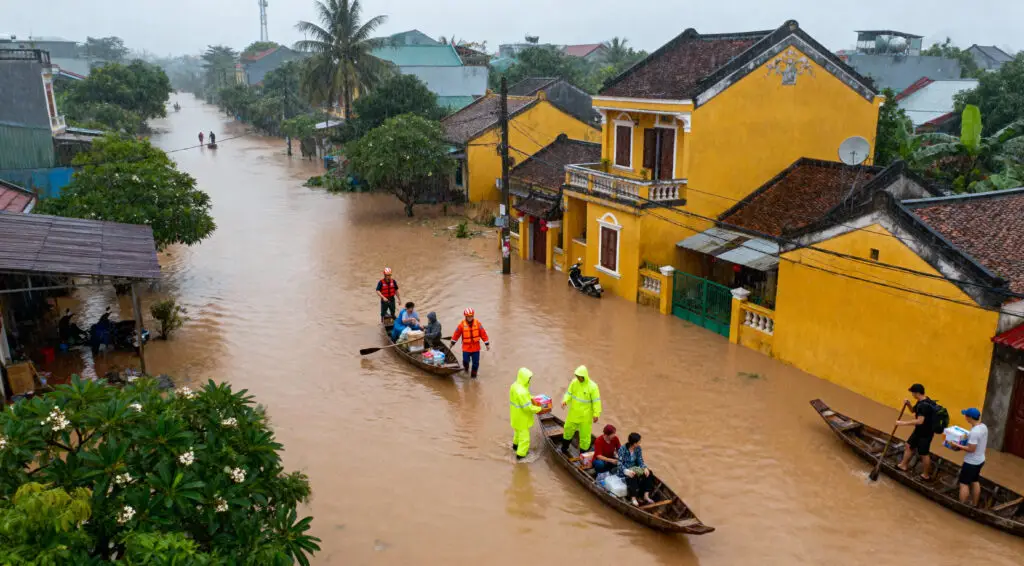Deadly Landslide Devastates Elgeyo Marakwet Communities
At least 21 people have killed and more than 30 are still missing after a terrible landslide in western Kenya. After days of nonstop rain that caused major floods and slope collapse, the calamity hit Elgeyo Marakwet County.
Local leaders said that the occurrence was one of the greatest natural disasters in the area’s history. Families are still weeping while rescue workers search day and night for survivors buried under heaps of rubble.

Source: People Daily
Rescue Operations Face Extreme Weather and Inaccessible Roads
Search and rescue attempts have been greatly slowed down by the rain, mudslides, and damaged roads that keep happening. The Kenyan Red Cross said that many of the villages that were devastated are still entirely shut off from help on the ground.
Flash floods have destroyed bridges and obstructed highways, making it necessary for rescues to use air transport. It is almost hard to get relief goods to the people who need them or to get to places where victims are thought to be stuck.
Government Mobilizes Military and Police for Aerial Search
Kipchumba Murkomen, Kenya’s Interior Minister, said that police and military helicopters were sent to help with rescue and evacuation efforts. Air crews have been quite helpful in finding people who are alone and bringing them help to faraway villages.
Murkomen told those who live on dangerous slopes and riverbanks to leave right now. He emphasized that the government’s first priority is still protecting lives while repairing the important infrastructure that the tragedy wrecked.
Recommended Article: Louisiana Residents Get Repair Aid After Hurricane Francine
Injured Survivors Airlifted to Eldoret for Emergency Treatment
Authorities said that about twenty-five persons with serious injuries were flown to Eldoret for more specialized medical care. Many additional people with minor injuries were treated in nearby clinics that were quickly filled with patients.
Doctors reported that treating trauma patients was very hard because of the lack of equipment and the fact that hospitals were inundated. Medical teams are now asking for blood donations and critical supplies to keep their work going in the coming days.
Climate Change Blamed for Intensifying Weather Disasters
Experts in the environment said that the disaster was connected to the rising climatic instability in East Africa. They added that rising global temperatures and cutting down trees had made rain fall harder and made landslides more likely in hilly areas.
Over the past ten years, Kenya has seen a lot of floods and landslides that have killed hundreds of people. Scientists say that without better regulations to stop catastrophes from happening, they might happen more often and do more damage.
Calls Grow for Stronger Disaster Preparedness and Prevention
Humanitarian groups have asked the government to put money into plans for dealing with disasters in the long run. Early warning systems, better drainage networks, and moving at-risk communities to safer areas are among the most important things to do.
Aid groups highlighted that being ready, not reacting, will save lives in future calamities. They emphasized that communities need to be given the tools they need to handle excessive rains, such as education, evacuation training, and strong infrastructure.
Nation Mourns Victims As Recovery Efforts Continue Relentlessly
As hopes diminish for those who are still missing, grieving services have begun for the victims all around Kenya. People who live in the area and volunteers are still sifting through the muck and rubble, trying to find the dead and bring families back together.
Officials promised to fix the roads and residences that were destroyed and to go into regulations to make sure that anything like this doesn’t happen again. Even though there was a lot of loss, stories of bravery and unity from people and rescue workers have helped the country stay strong.
A Reminder Of Fragility Amid Rising Global Climate Threats
The Elgeyo Marakwet landslide is a clear sign of how weak Kenya is to catastrophic weather. Heavy rains, cutting down trees, and not enough preparation all came together to kill people in rural areas.
Kenya has to make quick decisions on how to adapt to climate change and make its infrastructure more resilient while the hunt for survivors goes on. The country’s shared sorrow has sparked a fresh determination to save lives before the next disaster hits.























